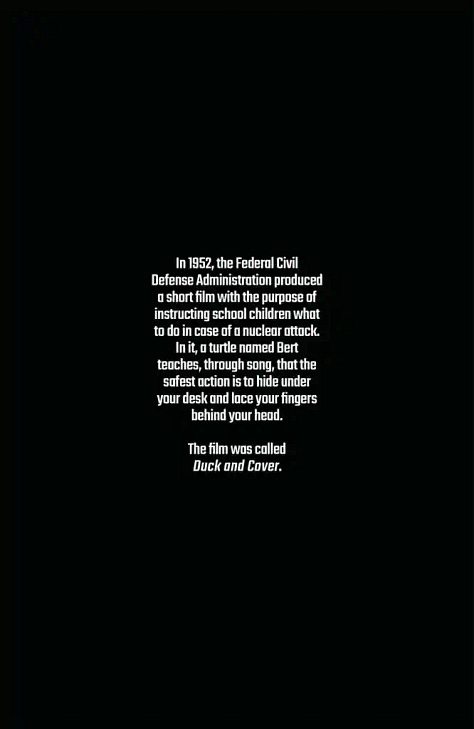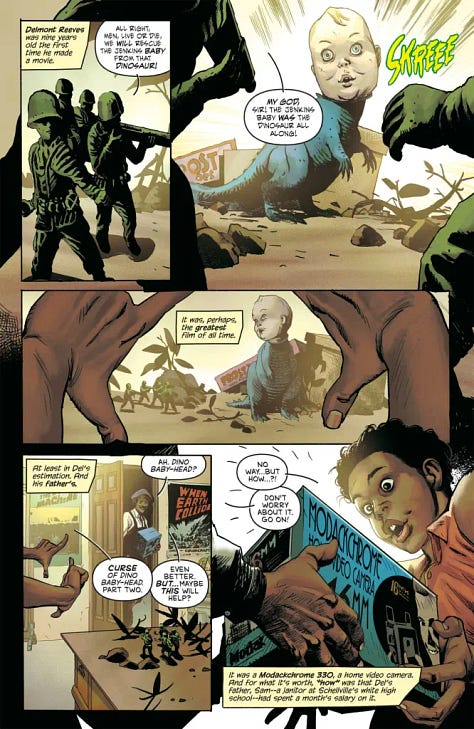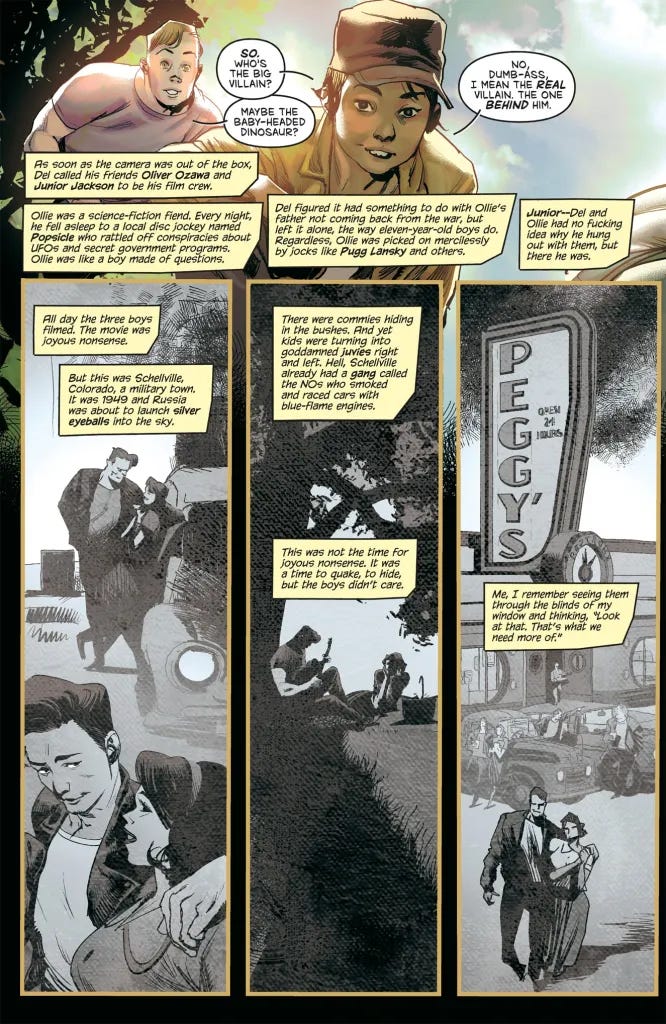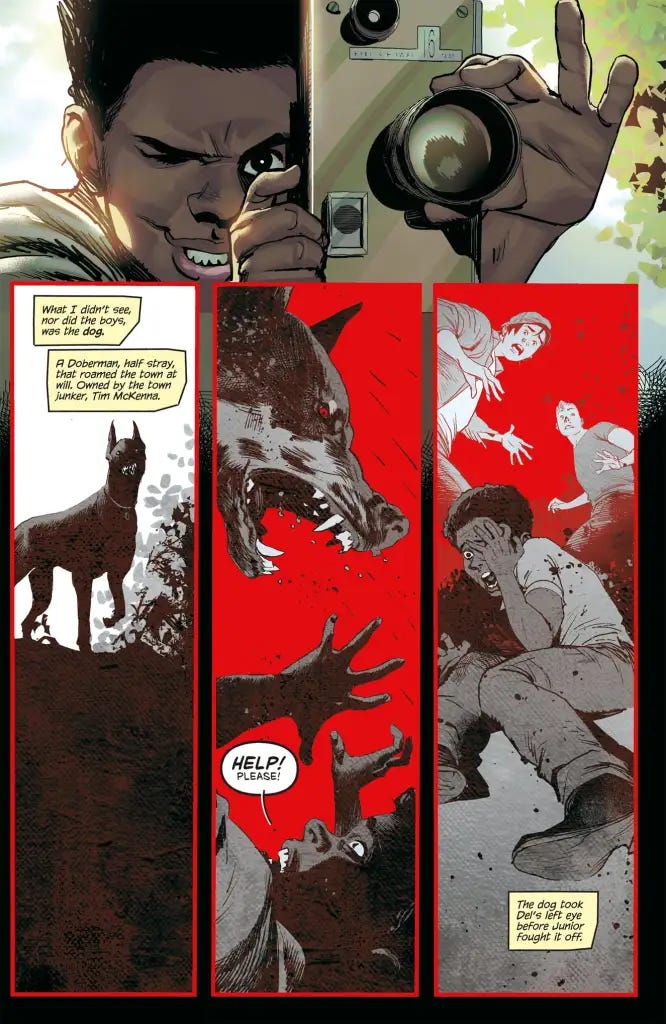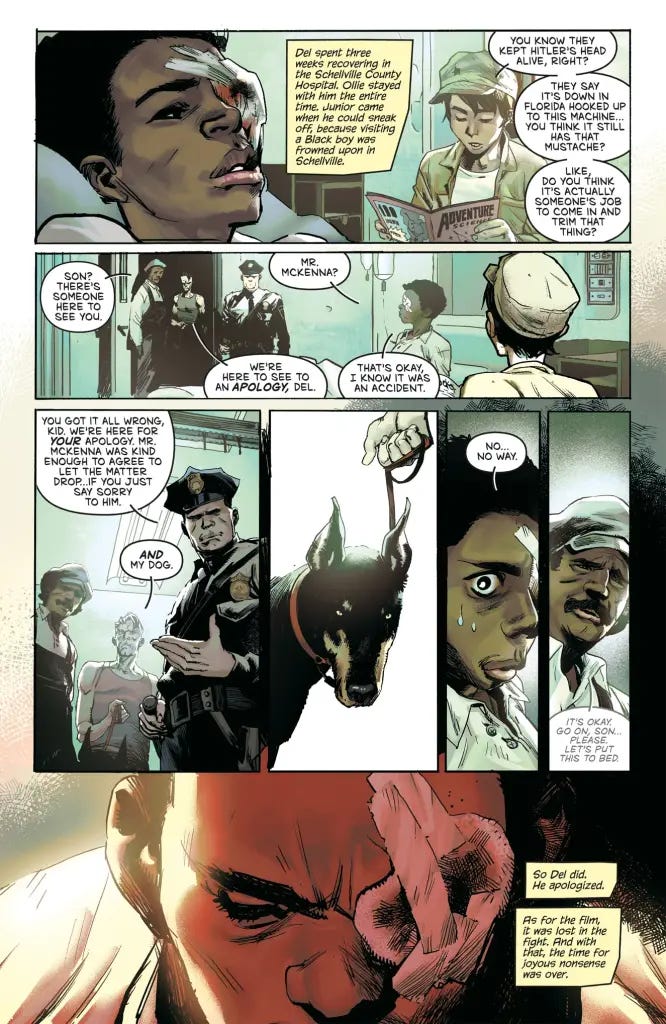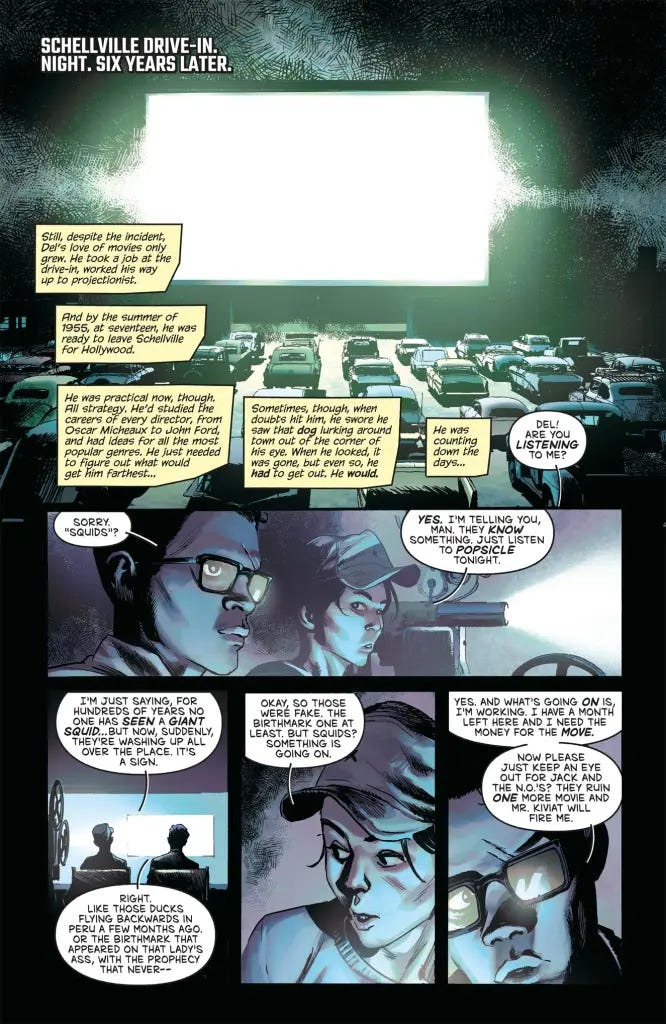Duck and Cover Review: Snyder & Albuquerque's explosive genre-mashing reunion rocks
The American Vampire team are back with a Cold War yarn that goes to unexpected places.
With American Vampire, Scott Snyder and Raphael Albuquerque dug into horror tropes and a century of U.S. history, exposing the bloody fangs behind our nation's optimistic grin. In Duck and Cover, they zoom in on the 1950s while widening their focus to evoke four popular film genres from the era. It's the conceptual equivalent of a dolly zoom, a trick Del Reeves might appreciate.
Del is Duck and Cover's protagonist, a Black teenager and aspiring director stuck in a Colorado nowheresville named Schelville, working at the local drive-in theater and waiting for high school to end. Meanwhile, the Cold War is heating up, and everyone is worried the world may end.
This first issue is meant to be a Melodrama; Horror, Science Fiction, and Westerns will each get a turn in subsequent chapters. So Snyder takes his time introducing the town's juvenile denizens and their traumas, anxieties, and rivalries, letting tension build until everything goes nuclear. Snyder started his career writing prose, and his captions here have an easy-rolling rhythm, matching the comfortable pace of small-town life to lure the reader in, peppering in vivid little bits of character description. Del's friend Ollie is "a boy made of questions." The leader of the local car gang doesn't just get good grades — she gets "mean, angry A's." Occasionally, those words might take up too much space on the page, but they're always a pleasure to read.
Albuquerque, with colorist Marcelo Maiolo, takes Snyder's words and makes them sing. His storytelling is spot-on and his tonal control is impressive, easily shifting from childhood wonder to horror to comedy to action. Emotions come through in bold expressions and body language, and character designs radiate nostalgic cool. In fact, every aspect of the Fifties we see looks stellar. Diners, drive-ins, and hot rods are lovingly rendered, so it's a shame we don't see more of these elements in the issue. Albuquerque takes a figure-centric approach, with characters dominating the foreground and many backgrounds left blank or filled with speed lines, in keeping with the manga influence that gives Duck and Cover its artistic drive. While this approach works, especially for a brutal death scene towards the end, sometimes these characters seem to exist in a void instead of the believable spaces we know Albuquerque is capable of creating.
Of course, nifty as they were, the Fifties weren't without problems, and Duck and Cover doesn't shy away from them. This issue alone packs more societal ills than you can shake a chocolate malt at. Poverty and racism have defined Del's life in Schellville, literally and violently shaping how he sees the world, and you have to imagine they might limit his chances in Hollywood, too. Ollie, whose family is Japanese, faces racism as well, compounded by his father's death in World War II. Other storytellers may have tried to skim over these ugly truths in favor of Happy Days hijinks or focused on them exclusively. But Snyder and Albuquerque strike the right balance, presenting a nuanced and honest world.
And then the world does end. The Bomb drops, but the kids somehow survive by hiding under their desks and emerge into a post-apocalyptic nightmare. These final pages let Albuquerque show off a different set of skills — instead of capturing a sense of bygone Americana, he designs things that never were. And he delivers, drawing fun and frightening elements reminiscent of War of the Worlds and The Matrix, given a Cold War twist. The shift in visual style also compliments the clever structure of this first issue, which carefully sets up the game board only to knock it over. In effect, Snyder and Albuquerque have shifted the reader from a familiar past to a strikingly original and foreboding future.
Flipping genres every issue like Duck and Cover is expected to is a risky strategy that could easily succumb to gimmickry, but so far, it's working. Regardless of the fallout, this kind of ambition calls for applause — and popcorn.
Duck and Cover #1 is in comic shops now. To snag a copy, click this.
Dark Horse Comics / $4.99
Written by Scott Snyder.
Art by Raphael Albuquerque.
Colors by Marcelo Maiolo.
Letters by Bernardo Brice.
8 / 10
Check out this seven-page preview of Duck and Cover #1, courtesy of Dark Horse Comics:
